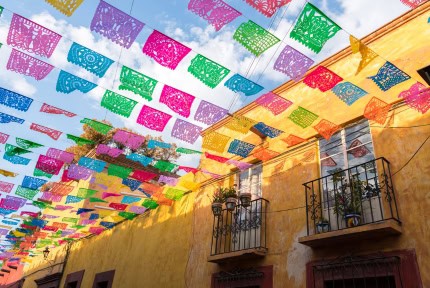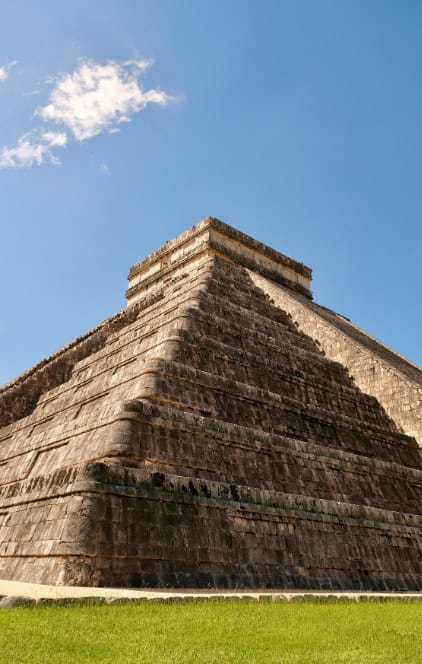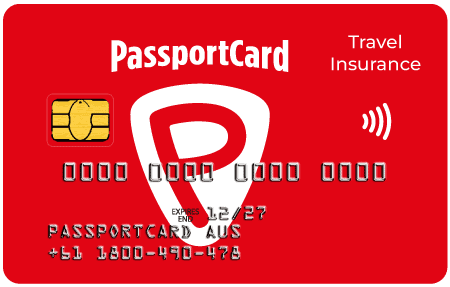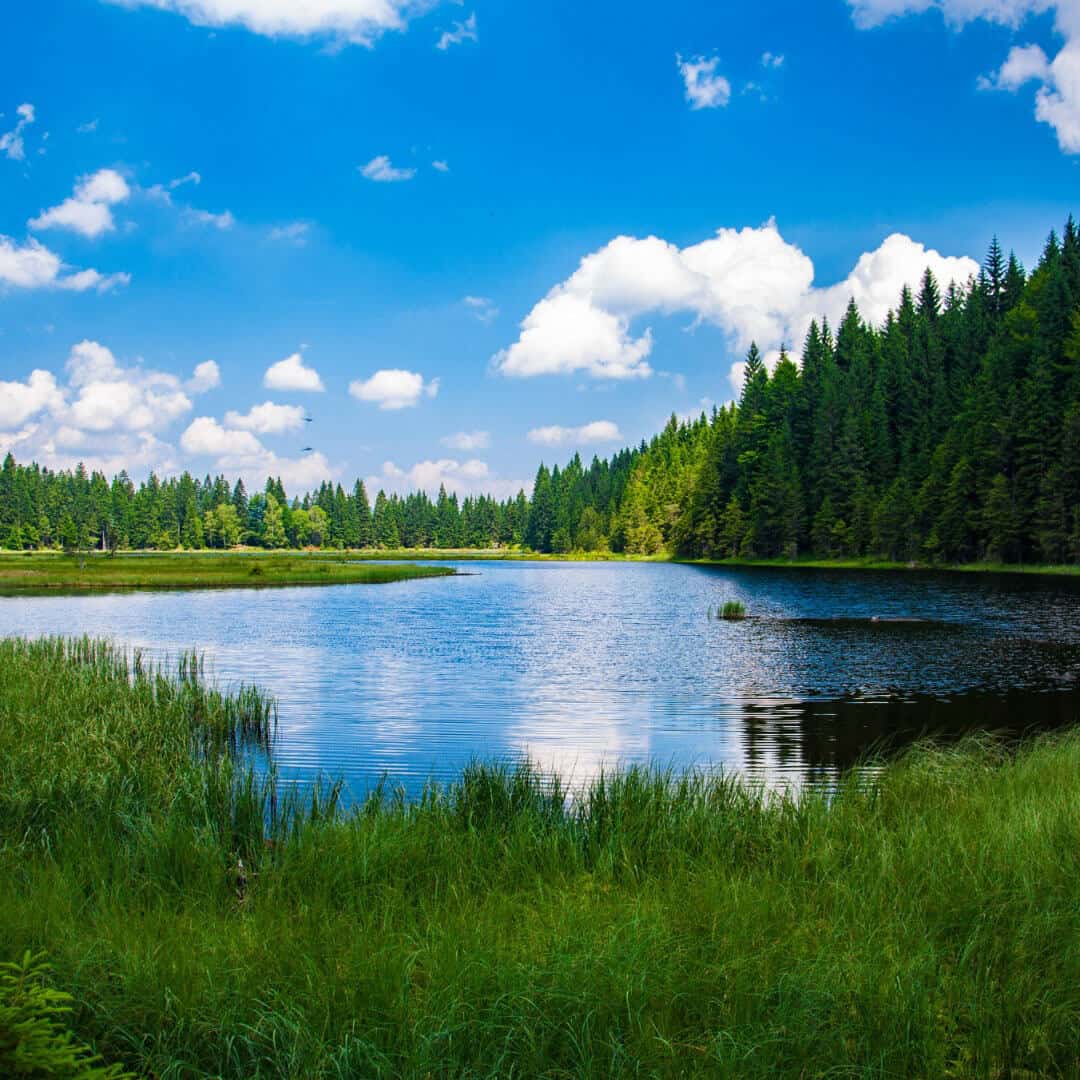

Mexico Travel Guide
The breadth and majesty of Mexico attracts millions of tourists every year.
And it’s no wonder why. The culture is a diverse, complex mixture of indigenous, immigrant, and colonial influences. Its ancient history is also rich; the country is home to some of the most iconic archaeological sites in Latin America.
Furthermore, Mexico’s bustling cities blend innovation, tradition, and vivacious personalities into a memorable experience.
In short, there’s a lot to appreciate—so we’ve put together a quick guide to help you make the most of your holiday.
Best ways to experience Mexico
The best way to explore Mexico depends on your interests.
Some travellers prefer the exceptional gastronomic scenes, while others dive deep into the heritage of famous figures like Frida Kahlo and Diego Rivera or visit ancient Maya and Aztec sites.
We know that choosing a starting point is hard, so here are a few ideas:
- Embrace the wonders of Mexico City – We recommend stopping by Mexico’s capital for at least a day. Start with the Museo Nacional de Antropología and enjoy an extensive collection on anthropology, archaeology, and history. In the evening, see a genuine lucha libre match at the Arena México or uncover Mexico’s culinary culture, with restaurants, streetside eateries, and hidden gems to delight any palate. For those with an artistic flair, check out Diego Rivera’s murals at Palacio Nacional or José Clemente Orozco’s own contributions at Palacio de Bellas Artes. Both locations also offer an important glimpse into the country’s rich cultural tapestry, so be sure to invest in a tour if possible.
- Explore Mexico’s most famous archaeological site – Residing not far from Mexico City lies the fascinating site of Teotihuacan. This impressive complex was an ancient city that predated the Aztecs and, at its peak, housed one of the largest populations of the ancient Americas. There’s plenty of debate about the people who founded Teotihuacan, but we do know that their ingenuity led to the Avenue of the Dead—an inspiring walk connecting the Pyramid of the Moon and the Pyramid of the Sun, as well as several other compounds. We recommend booking a day trip here and uncovering Mexico’s ancient origins for yourself.
- Discover the city of Guadalajara – Stepping back into modern times, Guadalajara is Mexico’s third-largest metropolitan area. It has ties to many famous facets of Mexican culture, including mariachi music, the equestrian sport of charrería, and indoor markets. Specifically, it is home to Mercado San Juan de Dios, the largest indoor market in Latin America. Other must-see spots include Guadalajara Cathedral, a testament to Spanish Renaissance architecture, and the neoclassical Teatro Degollado, a hub of the arts. For a reprieve from city life, you can visit nearby Lake Chapala and enjoy boat tours, quiet walks, golf courses, and bird-watching.
- Live it up at Cancun – Located in southeast Mexico, Cancun is a dream holiday destination for many. This sliver of white sand is one of the best nightlife locations in Mexico, with an assortment of first-rate resorts, clubs, and bars inviting tourists to kick back and relax. If you’re travelling with kids, you can instead enjoy endless beach days, visit the family-friendly Xcaret water park, or get up close with animals at Crococun Zoo. Further out lies Chichén Itzá and Tulum, two respective Maya cities. Making time for either is essential to every Mexican holiday due to the historical and cultural importance of the sites.
Visiting Mexico
Climate
Mexico’s climate varies because of its size. For example, the east and west coastal areas have tropical weather, with May to October being the rainy season.
Meanwhile, central Mexico is more temperate. Expect cooler winters and warm summers, whereas northern states of Mexico such as Baja California or Chihuahua are arid. Summers can be quite extreme in these parts due to desert heat so prepare appropriately if you’re going to be out and about during the day.
The best time to visit Mexico will depend on where you go. We recommend December to April when the weather is generally cooler and drier throughout the country.
Culture and language
Although unified under one national identity, Mexico is a diverse country. The traditions and mannerisms of one region won’t always align with that of another. Consequently, it’s best to research the local people before setting off.
It’s also important to pick up some Spanish. There are 68 indigenous languages in Mexico, but Spanish is the de facto national language. English is also widely spoken in major cities and areas closer to the Mexican-United States border but fluency varies.
Invest in a reliable translation app and study basic etiquette in Spanish as well.
Culturally, Mexicans are courteous and considerate. Many will help you out if you have questions and will be patient if you have trouble communicating.
Even so, it’s good to mind your manners. Using terms such as señor, señora, and señorita is the norm for people you’re not familiar with. Likewise, greeting people in passing is seen as polite, even if you don’t know them well.
Getting around
Thanks to Mexico’s thriving economy and tourism sector, there are many safe and easy ways to get around the country.
For example, if you prefer to rent a vehicle, you can use your Australian driver’s licence while in Mexico. Some car rental companies may also require an international driving permit.
Be sure to learn the local rules and stick to toll roads if you go cross-country. Do not travel at night or go into regions with high road crime.
Alternatively, buses are popular options. In cities, buses are called camiones or autobuses and run consistently. Fares are minimal, being just a few pesos.
For longer-distance travel, first and second-class buses offer comfort. Ideally, opt for first-class buses as they provide more amenities, such as air conditioning, reclining seats, and onboard restrooms. Additionally, they’re faster and have fewer stops compared to second-class buses.
Taxis are another common, budget-friendly option while in cities. Choose taxis with fare meters or fixed pricing for specific areas. Otherwise, be prepared to haggle before you set off. Never travel in unmarked or unofficial taxis as these are often scammers or thieves.
Accommodation
Accommodation in Mexico suits different needs. For instance, hotels are one of the most popular choices. Identifiable as posada or hoteles, Mexican hotels range from small with bare amenities to luxury resorts with extensive upgrades.
Review the options available in your chosen destination and bring insect repellent as nuisances like mosquitoes are often unavoidable.
For a more unique selection, cabañas are romantic beachside huts provided by hotels and resorts. Amenities can vary greatly. Some rustic experiences don’t provide electricity, while others are equipped with the smaller comforts of home.
Finally, hostels are available for budget-conscious solo travellers. You’ll find most hostels to be in tourist areas and major cities. Outside of these areas, we recommend staying at a larger establishment like a hotel as quality can vary greatly.
Entry requirements
Australians do not need a visa to travel to Mexico, but you will receive a tourist permit upon arrival. Permits are valid for up to 180 days or less. It’s likely your permit will only last for as long as you state your visit will be, so do not anticipate the full 180 days.
The time validity of your permit will be stamped on your passport. Pay attention to this stamp as you won’t be able to extend it in most circumstances.
Before you travel, visit the Smartraveller website. Travel requirements can change quickly, so it’s important to stay up-to-date before and through your trip.
All benefits and covers are subject to the terms, conditions, limitations and exclusions listed in the Combined Financial Services Guide and Product Disclosure Statement (PDS) and on other policy documentation, including the schedule.
Please refer to the relevant PDS before purchasing our travel insurance to understand what is, and is not, covered by the policy to ensure it is the right cover for you.
Mexico travel insurance FAQs
It’s always a good idea to get travel insurance when travelling to Mexico. That way, you know you have protection if something doesn’t go to plan. Whether it’s lost luggage, travel delays, trip cancellations, or unexpected medical or dental emergencies, a dedicated travel insurance policy is useful in many situations. Opting for a policy that includes instant claims also provides convenience so you can quickly cover the most common travel claims.
The best way to find out how much it will cost to get cover to travel to Mexico is to get an instant quote with PassportCard. It only takes a couple of minutes to get a personalised quote by providing some basic details such as your age, destination/s, travel dates and the level of cover you would like.
No. Many Australians don’t realise that they won’t be covered by Medicare when overseas. Purchasing travel insurance with cover for medical emergencies and evacuation is essential to ensure you won’t be left to foot the bill if you become seriously sick or injured while travelling.
Not automatically. If you’re planning on doing any activities like cascading, deep sea fishing, mountain biking, mud buggying, paragliding, quad bike riding, outdoor rock climbing, segway tours or sky diving, you’ll need to add Optional & Adventure cover for these activities when you purchase your travel insurance to make sure you’ll be covered.
Simply call our Global Assistance team on +61 1800 490 478 or contact us on WhatsApp. Our Australian-based Global Assistance team is available 24/7 and can quickly handle most common claims on-the-spot over the phone.
Preparing for your trip to Mexico
All set for your trip to Mexico?
Make sure you’ve ticked all of these items off your checklist before you head off:
- Ensure that your passport is valid for at least 6 months beyond your intended departure date
- Speak to your doctor to find out if you require any travel vaccinations. You also need to take measures to protect yourself against malaria, Zika virus, dengue fever, chikungunya, Chagas disease and leishmaniasis. Use insect repellent to prevent insect-borne diseases
- Be cautious of food-related and waterborne illnesses. Only eat and drink at reputable restaurants
- Do not travel to dangerous areas or travel alone at night. Do not travel on highways at night. Use toll roads as they’re safer. Report any incidents to the local authorities as soon as possible
- Watch out for petty crime. Never leave your personal items alone in public areas or on public transport. Only stay at reputable accommodation
- Notify your financial institution of your plans to travel
- Set up a travel currency card or another payment option before your trip. While most places accept debit or credit cards, it’s a good idea to carry some Mexican pesos (MXN) in case of emergencies. Secure any cash on your person while travelling
- Contact your phone provider to ensure your phone plan will cover you while you’re away or purchase a prepaid international sim card
- Book tours, activities, and reputable accommodation in advance
- If you’re travelling solo, provide details of your travel plans to a family member or close friend so you can be contacted in case of an emergency
- Save emergency numbers and consular assistance contact details. Create safety plans and educate your children on what to do if you’re separated
- Organise your travel insurance with PassportCard.
Get covered for your trip to Mexico with PassportCard



Instant payouts on approved claims with PassportCard
When you choose PassportCard, you’ll enjoy the extra peace of mind of knowing you’ll be able to cover most expenses there and then if something goes wrong.
When you purchase one of our travel insurance policies, we’ll ask you if you’d like a PassportCard to take with you on your trip. If something happens while you’re away (like your luggage is delayed, your cash is stolen or you experience a medical issue), our team can handle your claim quickly over the phone and transfer funds to your PassportCard on-the-spot**.
If approved, you’ll be able to withdraw cash to cover expenses that can arise from things like delayed luggage or stolen cash, or if it’s a medical issue, we can instantly add funds to your PassportCard so you can immediately pay for expenses when you need to.
You won’t need to fill out any paperwork and instant access to funds means you won’t be left out of pocket.
Find out more about how instant claims work or get a quote for your upcoming trip.












